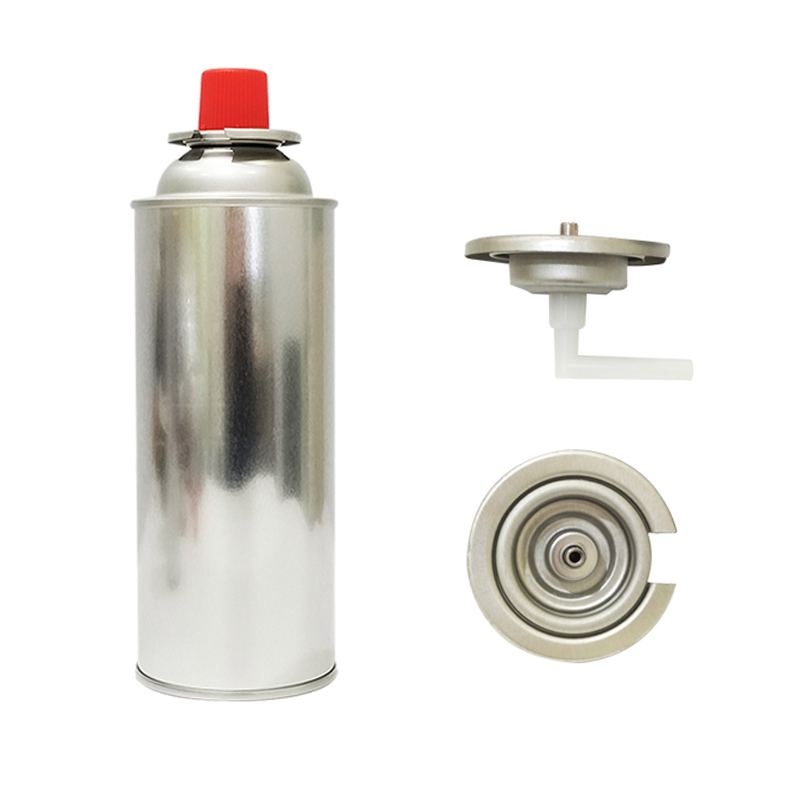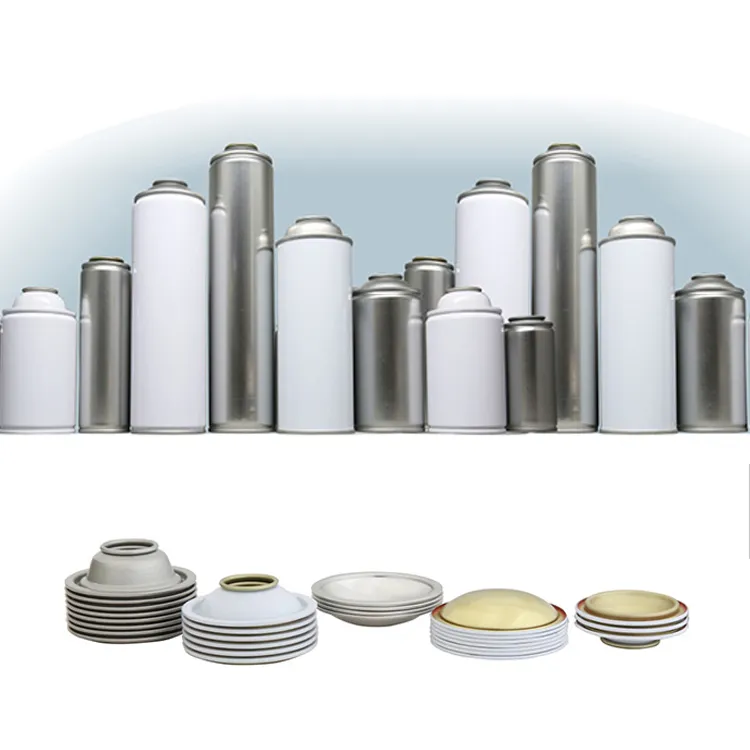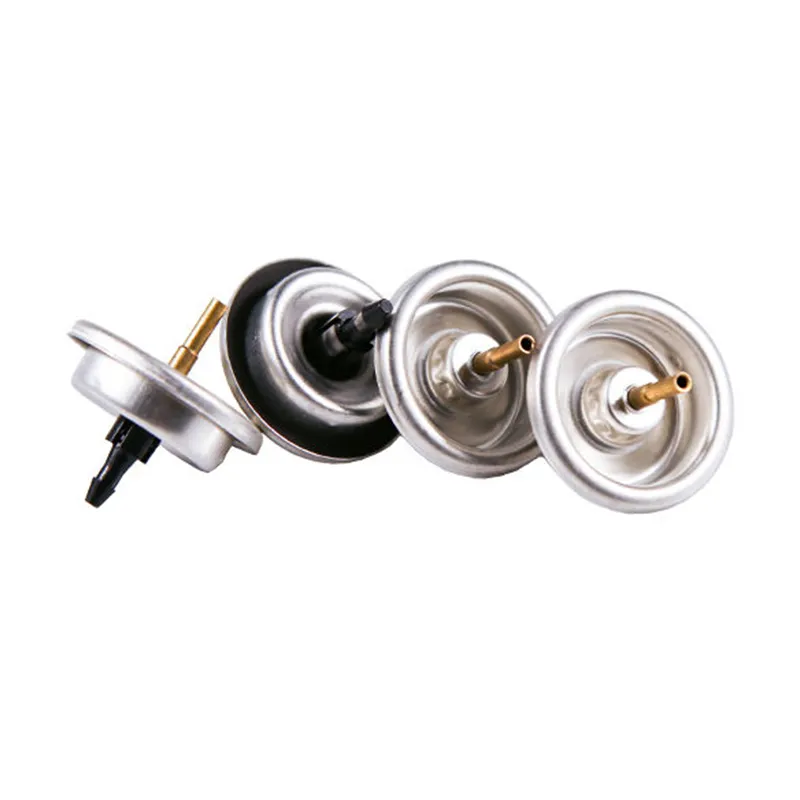In everyday life, we often encounter seemingly simple yet incredibly complex packaging containers for everything from hairspray and deodorant to paint sprays and kitchen cleaners: aerosol cans. But have you ever truly understood the structure of these cans? Specifically, what are the top and body parts called? What are their functions? And why are they so critical?
This article will focus on two crucial components of an aerosol can: the cone and dome. These components not only provide structural pressure-bearing and sealing functions but also directly impact the spray quality and product safety.

What are the top and body parts of an aerosol can called?
This seemingly simple question holds a profound meaning.
The top and main body of an aerosol can are called:
1. The top structure is called the dome.
2. The transition between the dome and the can body is called the cone.
The central cylindrical structure of the can, commonly known as the main "body," is called the can body. Therefore, a standard aerosol can can be divided into:
· Body
· Cone
· Dome
These two structural components—the cone and dome—play an irreplaceable role in the overall design of an aerosol can.

Why are the cone and dome so important?
Many people think of an aerosol can as simply a pressure vessel, but it's actually a culmination of engineering design. The cone and dome, in particular, perform the following key tasks:
1. Supporting Pressure and Ensuring Safety
Aerosol cans are often filled with compressed gas or propellant, with internal pressures typically reaching 2 to 6 atmospheres. The dome, due to its arched shape, evenly distributes internal pressure, preventing localized bursts.
2. Providing a Strong Seal to Prevent Leaks
The cone is tightly connected to the body through a crimped seal, while the dome secures the valve. This double-sealed system ensures that the contents remain sealed.
3. Provides Structural Stability
The conical structure acts as a buffer and transition between the can body and the dome, significantly enhancing the structural stability of the entire can, making it particularly resistant to deformation under external forces such as drops and collisions.
What materials are used to make cone and dome aerosol cans?
——What is tinplate?
——Why is it the preferred material for cone and dome aerosol cans?
Tinplate aerosol cans are the most common type of metal aerosol can in the industry. Tinplate is a material coated with tin on a steel surface, offering excellent corrosion resistance, strength, and workability.
Advantages of tinplate include:
· Rust and corrosion resistance: The tin layer effectively prevents iron oxidation.
· Suitable for seaming: Suitable for forming complex domes and cones.
· Environmentally friendly and recyclable: Complies with international environmental standards.
Aluminum cans vs. tinplate aerosol cans: Which is better?
Although aluminum aerosol cans have advantages in terms of lightweight and oxidation resistance, tinplate aerosol cans still dominate both industrial and consumer markets due to their stable structure and affordable price. This is especially true for high-volume consumer goods such as insecticides and air fresheners, where tinplate's high cost-performance ratio is unmatched.

Questions and Answers about Cones and Domes
1. Are the cone and dome of an aerosol can produced separately?
Yes, in most factories, the cone and dome are stamped and formed separately, then connected to the can body using a high-strength crimping process. High-end manufacturers even design customized cone-top structures for different types of contents.
2. Do all tinplate aerosol cans have the same dome shape?
No. Depending on the pressure rating and the nature of the contents, the dome can be standard, high-arch, or a safety burst (bursting disc design) to accommodate different pressure and functional requirements.
3. Does the connection between the cone and dome affect the spray effect?
The answer is yes. A poor connection between the cone and the cap will directly lead to nozzle instability, air leakage, or uneven spray dispersion.
How are cone and dome shapes formed in the tinplate aerosol can manufacturing process?
The cone and dome forming process for aerosol cans is as follows:
1. Cutting the tinplate
2. Punching the cone and dome
3. Die calibration
4. Applying a protective coating
5. Pressing and crimping the connection
6. Automated pressure and seal testing
The process control of these two steps directly determines whether the tinplate aerosol can can pass safety certifications such as UN and DOT in European and American markets.
What are the innovative trends in cone and dome?
As the packaging industry moves towards lighter, more environmentally friendly, and smarter packaging, cone and dome design is also evolving.
1. Lightweight Design
Reducing the tinplate thickness while increasing structural strength makes tinplate aerosol cans more environmentally friendly and reduces transportation costs.
2. Color Printing and Brand Customization
More and more brands are requesting brand logos or functional graphics printed on the dome area, which requires more precise process control.
3. Integrated Safety Blast Technology
To prevent unexpected high temperatures from causing the can to explode, modern dome designs incorporate preset rupture points, enabling controlled pressure relief under extreme conditions.

What industries are tinplate aerosol cans suitable for?
Industries suitable for tinplate aerosol cans:
1. Household cleaning (spray cleaners)
2. Cosmetics (setting spray, dry cleaning spray)
3. Automotive (spray paint, lubricants)
4. Agriculture (pesticide spray)
5. Pharmaceuticals (spray analgesics)
In these applications, the strength and sealing properties of the cone and dome directly determine safety and user experience.
How to choose a high-quality tinplate aerosol can cone and dome supplier?
A qualified tinplate supplier should possess the following qualifications:
1. ISO 9001 quality system certification
2. Automated stamping lines and testing equipment
3. Customizable in a variety of sizes and structures
4. Export experience and understanding of international standards such as UN/DOT
Many domestic manufacturers are already producing world-class quality tinplate aerosol cans and exporting them to Europe, the US, the Middle East, Southeast Asia, and other regions.
The Sustainable Path of Cone and Dome
Faced with global environmental trends, cone and dome manufacturers face new challenges:
·Green material substitution: Exploring lead-free coatings and solvent-free molding.
·Higher recyclability design: Easy-to-disassemble structures for convenient material sorting.
·Intelligent monitoring: Embedded pressure tags for transport monitoring.
Aerosol cans are no longer just disposable consumer products; they are gradually transitioning to a circular economy model.
If you are looking for professional tinplate aerosol can structural solutions, or would like to learn more about cone and dome production technology and industry trends, please leave a message or contact us for detailed information and technical support.
What is Dekai’s production capacity per year?
Dekai boasts impressive annual capacity. Our lines produce over 300 million coated and printed metal items, alongside more than 300 million aerosol cans. This scale positions us among China’s top metal packaging companies. We can meet large-scale purchasing demands—from tens of thousands to tens of millions of units.
Buyers looking to place large orders for tinplate sheets, custom printed tinplate, gas cans, or cylindrical metal packaging can rely on our capacity, fast production, and dependable supply chain.

